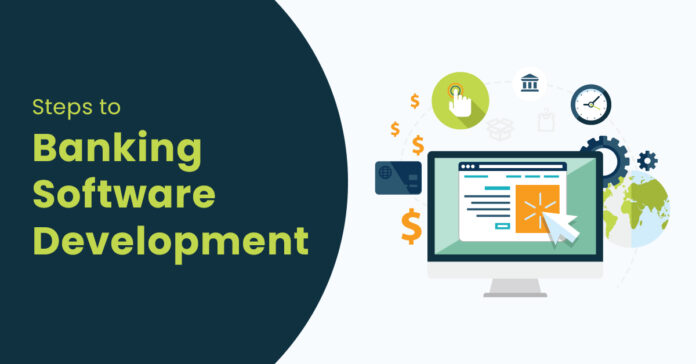Introduction
Software development is a notoriously complicated field. It’s even more confusing if you want to go for banking software development in the age of mobile banking, cryptocurrency, and something called instant payments. But not anymore because below you will see the exact steps you need to take to develop secure banking software. Follow them and you will have a high chance of success.
Step 1: Conduct market research
The best way to ensure your product is relevant and valuable to users is by paying attention to market trends. Knowing the big picture may also help you identify issues and create a timely, innovative solution. Some of the biggest banking trends for 2022 include;
- Biometric authentication
- Voice technology
- Cardless cash withdrawals
- Using big data to prevent fraud
- Smart chatbots
Keeping track of the latest trends will help you anticipate how people handle their finances and make your software for banking sector ready for upcoming changes.
Step 2: Target audience analysis
The next step is to identify the type of people that will be using your banking software. This includes understanding their income levels and their demographics. Once you know this, you’re able to make sure that they’re able to use your fintech software easily.
The more you know about your audience, the higher chance you’ll have to introduce groundbreaking features that your audience won’t find anywhere else. This will help you stand out against your competition. When marketing your banking software, different audiences want different things and through proper analysis, you will know what they are. This will help to build the right banking software for your targeted customers.
Step 3: Competitor research
You’re now ready to research similar products that your competitors offer. Studying their advertising and marketing tactics will give you a good idea of how to build and then if required promote your product. Explore what your competitors may be overlooking and create valuable software for you banking software application for your audience.
Step 4: Focus on regulations and compliance
Banking software operates in a heavily regulated industry, so make sure your software is secured and functioning effectively across multiple countries and different states in these countries. There are a lot of regulations that your software needs to comply with, including
- GDPR
- SEPA
- PCI DSS
- PSD2
Meet these guidelines first before developing your banking software.
Step 5: Ensure security
Of course, your software should be secure and provide excellent protection. Banking software- which is more and more being used for things like online shopping- is especially vulnerable, considering people will use them in public places with a lot of people around. If you want to make sure that your banking software is secure, then don’t forget to add features that will tackle the problem. Software in banks should include alarms and tools that allow the prevention of unauthorized activity on your software.
- Multi-factor authentication
- Robust encryption
- Analysis of normal behavior using data science
- Real-time alerts about the activities taking place in the user accounts
Always ensure your software for banking industry keeps up with all the security challenges.
Step 6: Coding
Now that product ideation is done, we can delve into the technical side of things. You’ve moved on to coding, setting all the foundations for development of a banking software or website. This is when your fintech software development team begins to work on the infrastructure, frontend, and backend to develop your banking software.
Step 7: Testing
After coding and programming is accomplished, testing is the next step in banking software development. It’s important because this ensures that there are no bugs or other errors that can hamper the user experience.
There are several different software testing methods and various types of quality assurance that are part of the production process. Essentially, by using the services of skilled quality assurance experts, you can make sure that the final product is flawless.
Step 8: The Post-Development Phase
The post-development phase of banking SDLC process consists of handling the updates and resolving the issues that arise in the software once it is launched. Understand that your banking software development journey is not finished once the testing phase gets over. Once your baking software is deployed in the real world, some issues will come up. You will have to prepare for these issues in advance. Your dedicated software developers will handle these issues for you.
Apart from handling issues, the remote development team that you hire will also update your banking software regularly. By rolling out regular updates, you can ensure that your banking software is always in sync with market requirements.
Summing up
Software development for banking industry is never easy, but now you can see that it’s not as scary and confusing as you thought.
This article should help you understand how the system works and offers some helpful tips for making your project successful. Hire developers who are experienced in building financial software. They will help you build secure banking software with ease.

